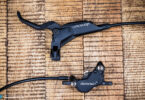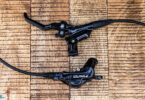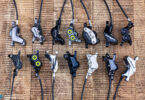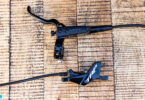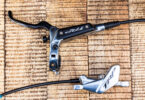Two years ago Shimano’s Di2 XTR hit the market with a wave of excitement, promising super accurate electronic shifting and rugged reliability. The cycling world jumped up in excitement, then they saw the price and quietly sat down again! For elite racers and those with big wallets XTR was perfect, but it would be the affordable XT that would have mass market appeal. We have been riding the new Shimano XT Di2 M8050 to see if it measures up.
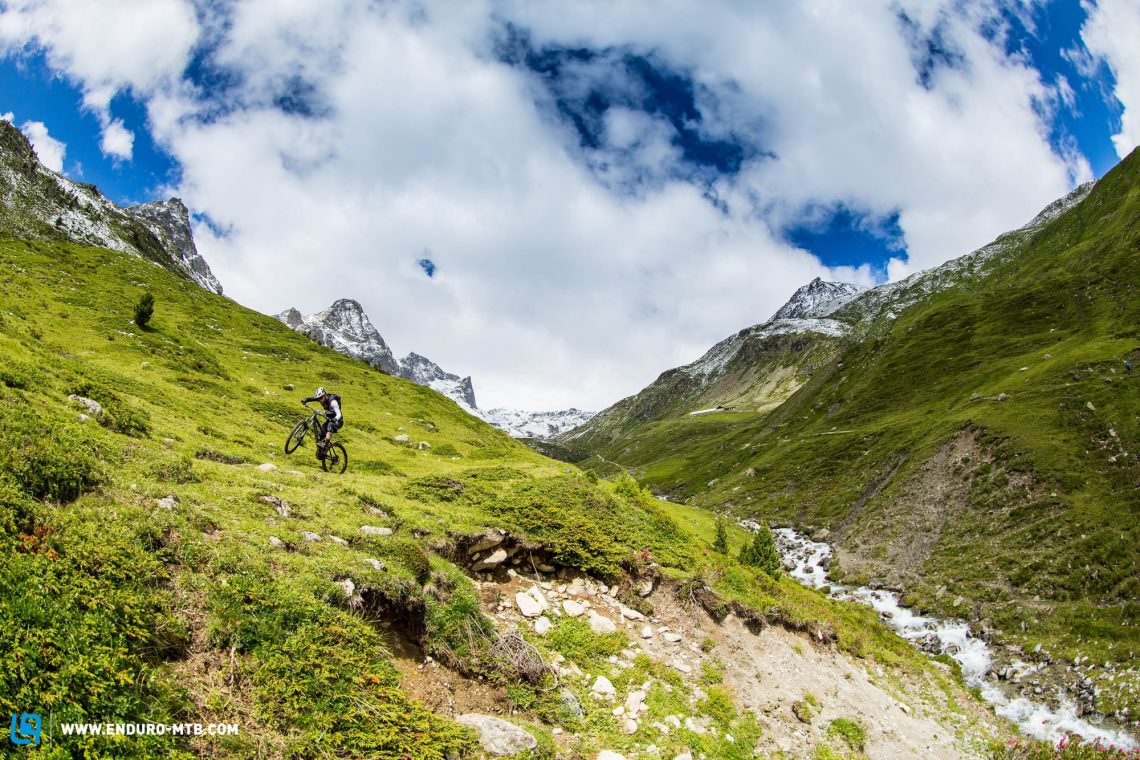
Benefits of Shimano XT Di2 M8050
The electronic shifting of the XT Di2 M8050 means that with a light touch on the lever, riders should expect the same extreme accuracy, speed and precision as found on the class-leading XTR Di2. However, the main benefit is found for those using a 2x drivetrain where the new Synchronized Shifting will automatically change the front derailleur as the rider shifts through the gears, a revelation for those used to mechanical drivetrains. Soon to be released (autumn) is a new app based Bluetooth E-Tube program allowing riders to wirelessly customise their drivetrain, adjusting everything from shifting preferences to gear shift speed, all from a smartphone or tablet. The Di2 system makes setup effortless and easy to adjust, but can the Deore XT Di2 deliver the same performance for less?
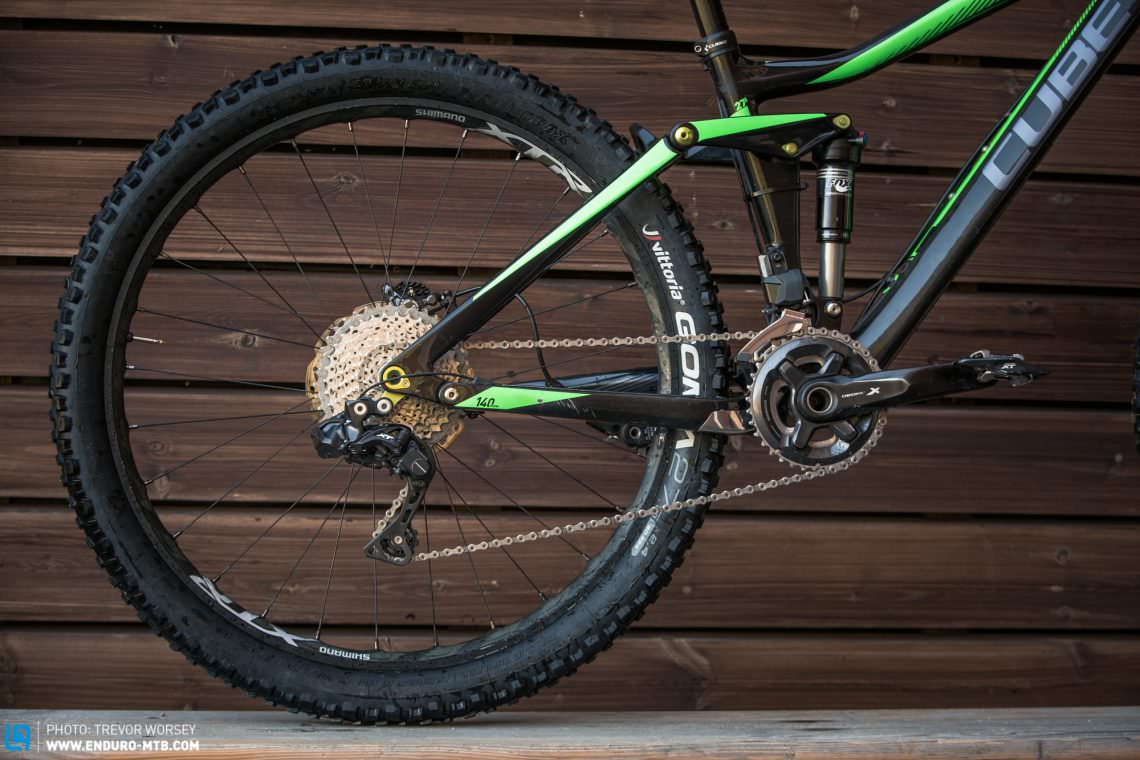
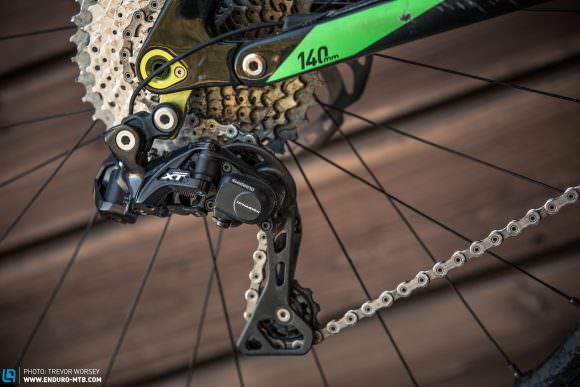
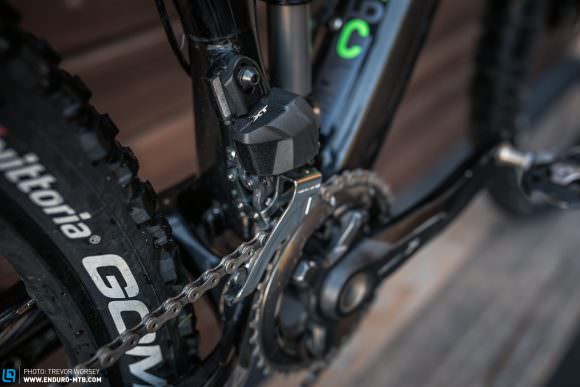
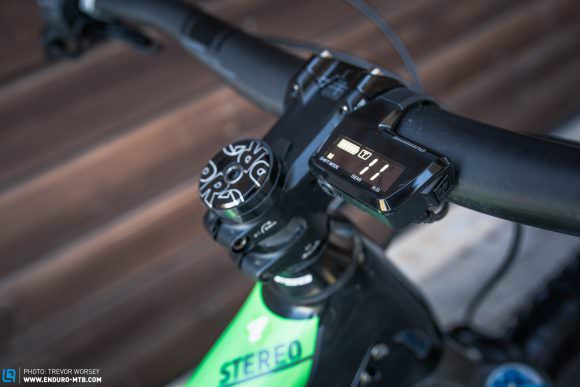
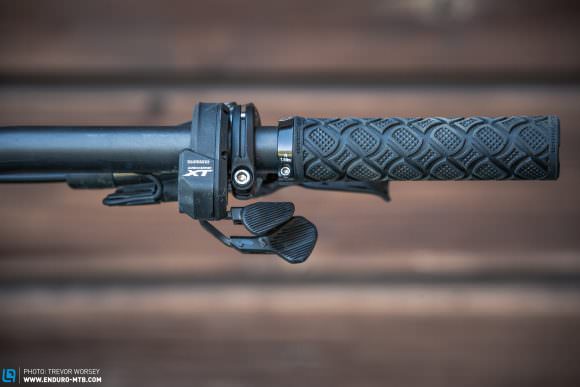
Riding Shimano XT Di2 M8050
We joined the Shimano team in St Moritz in Switzerland, where we were given the opportunity to put their Shimano XT Di2 M8050 drivetrain through its paces on the rugged Alpine trails. We tested both 1x and 2x drivetrains and gave them some hammer, shifting under load like a beginner and dumping heaps of gears at the wrong time to see if we could confuse the system. Would the electronic system be able to handle some abuse, or would it get its microchips in a twist?
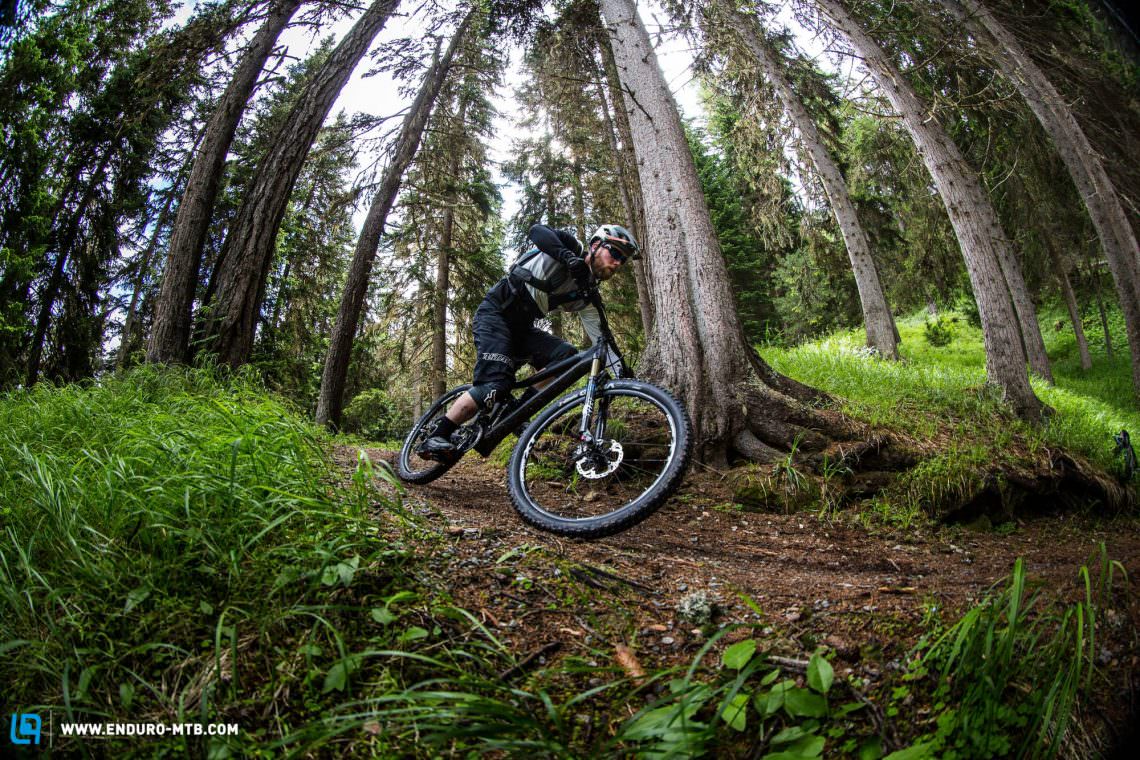
Is the XT Di2 M8050 a poor riders XTR?
Any concerns that the XT Di2 M8050 is a poor cousin to the accurate XTR is instantly dispelled from the first shift. A light touch on the lever results in a quick buzz from the motor followed almost instantly by an imperceptible shift.The rear mech moves up and down the 1×11-specific 11-42-tooth cassette with crisp precision, no rubbing or hesitation. There’s no hunting or vagueness from the drive train, and it’s easy to adjust from the head unit should things be knocked out of alignment. Using the new E-tube app allowed us to adjust the shifting speed, and set in ‘very fast’ the chain was driven up and down the cassette impressively fast, like an F1 gear change slamming into place. Racers will love the ‘very fast’ setting but it does result in a more violent action, lovers of smooth shifts will prefer a slower setting. Even when we dumped a load of gears under full load, although noisier, the rear mech kept things under control, and when shifting properly the precision is market leading and blows the competition out of the water.
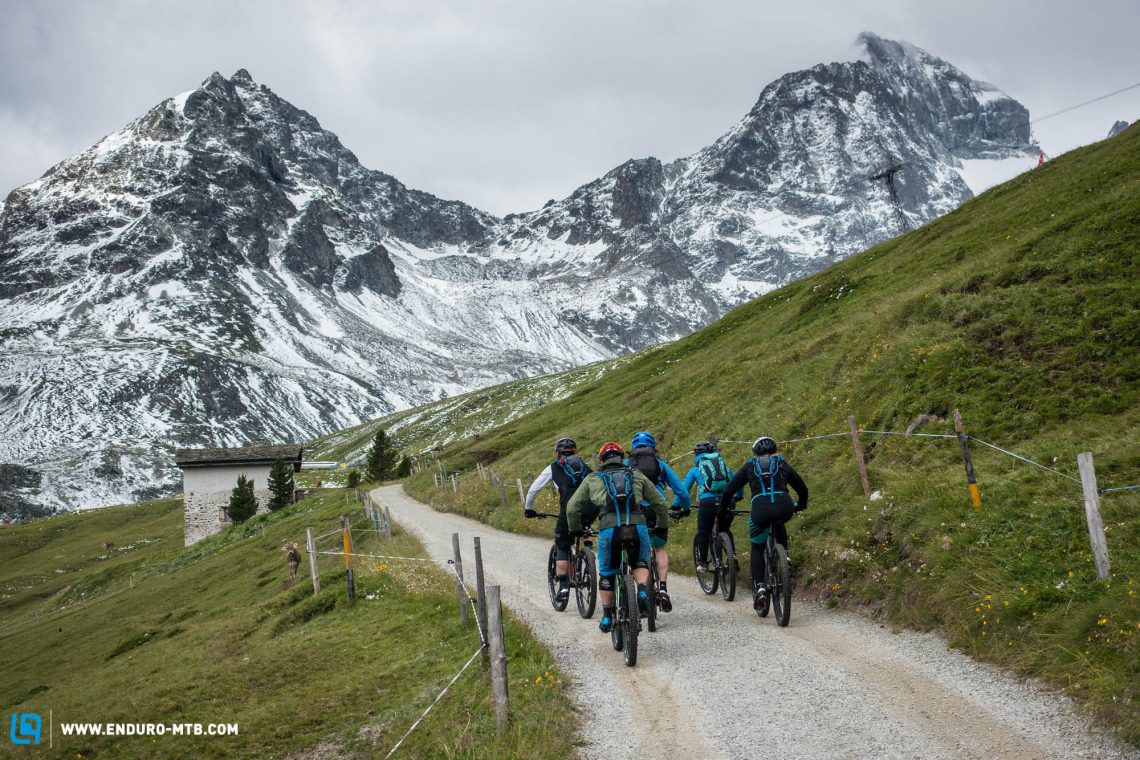
Synchro Shift is a revelation
It’s a fact – for most riders a 1x drivetrain now offers all the range required, but for those who live in the alps or love high cadences and desire more range, then the Synchro Shift of the Shimano XT Di2 is a game changer. Being able to shift through the entire range from one shifter, with an automatic chainring shift is superb and very intuitive. The change between chainrings does result in a small delay as the drivetrain sorts itself out, but only for half a second. With the new E-tube app, the rider can customise at which point in the range the chainrings shift, then save it to one of 2 different configurations that are easy to select from the controller. If it sounds complex, it’s not, it’s incredibly simple and now makes a double chainring a viable option, even for those who desire a simple cockpit. The system includes an Auto Trim that ensures shifting is always precise and the front deraliuer has 25% more power than the mechanical system, driving the chain over faster under load. When it comes to chain security, we did lose a chain once to the outside with the 2x setup, but aside from that it was faultless and quieter than expected.

Is Shimano’s XT Di2 M8020 now perfect?
There was certainly very little to fault with the new Shimano XT Di2, the shifting feel was near perfect. It takes a small amount of time to get used to the very light action of the short stubby Di2 levers, and those used to longer throw levers may not instantly fall in love with the ergonomics, but after a few days we decided we liked them. Our only slight concern is the thin plastic materials used in the component housings, especially the front mech, feeling a little more like a product aimed at the road than the rugged MTB environment. Time will tell if durability can match the performance. We will have a drivetrain on long term test very soon.
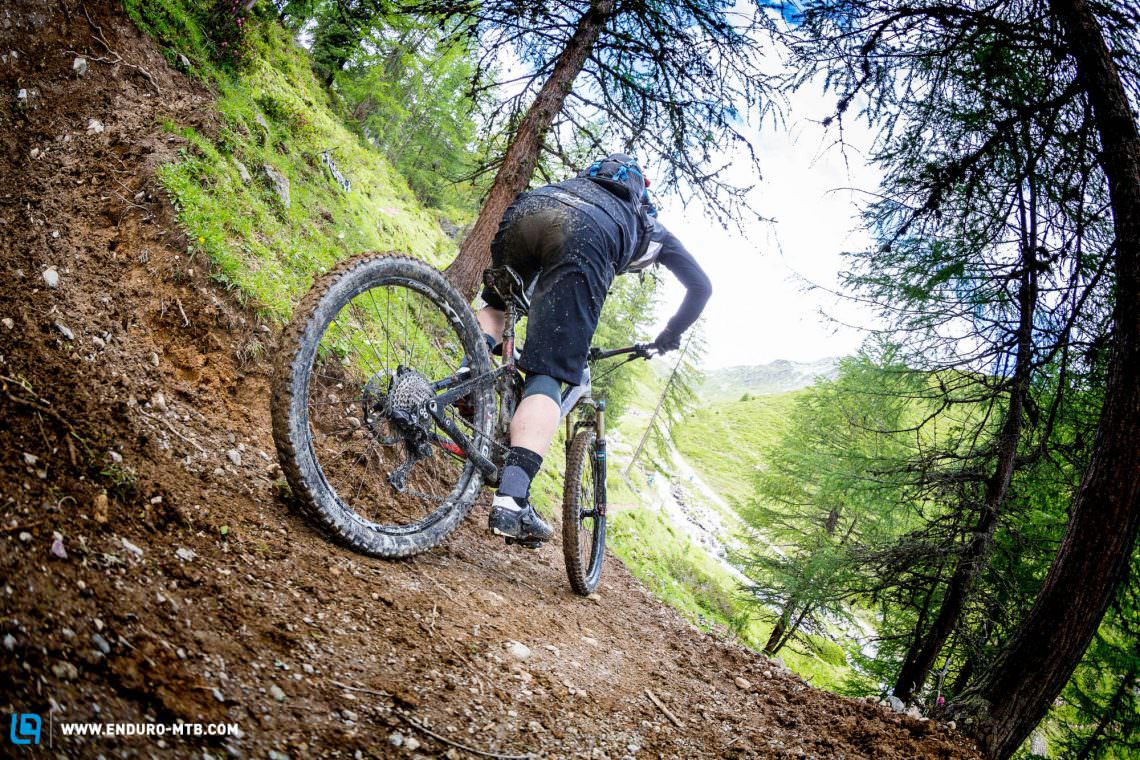
So should I buy Shimano XT Di2 M8020 or mechanical Shimano XTR?
This is a question that many will face as the prices are almost identical. Racers and serious weight weenies will still love the exotic and lightweight XTR drivetrain, but for the majority of riders, especially those considering a double, the crisp, reliable and auto tune shifting of the XT Di2 make it the thinking riders choice. We will bring you a long term test as soon as we have racked up the kilometers. Until then why not check out our XTR Di2 long term review.
Did you enjoy this article? If so, we would be stoked if you decide to support us with a monthly contribution. By becoming a supporter of ENDURO, you will help secure a sustainable future for high-quality mountain bike journalism. Click here to learn more.
Words: Photos: Trev Worsey and Irmo Kaiser




